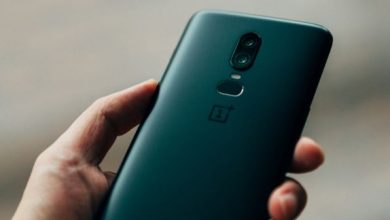Evolution of the iPhone [2007 – 2022]

It seems like only yesterday that the very first iPhone hit the market. In reality, it was almost 10 years ago in 2007 when Steve Jobs announced the release of the iPhone at a special event in Cupertino, California. The device not only revolutionized mobile phone technology but also helped to shape the course of Apple’s history. This article will take a look at key trends and changes that will occur with the iPhone over the next ten years, from its current form to its anticipated future incarnation.
iPhone (2007)
The iPhone was first introduced in 2007 and has since become one of the most popular cell phones on the market. Here are some of the key features that made the iPhone so popular.
The iPhone was the first phone to use a touch screen interface. This made it easy to navigate and control your phone with just your fingers.
The iPhone also featured multi-user support, which allowed multiple people to use the same phone simultaneously. This was a major breakthrough at the time and made it easier for people to share information and files.
Another key feature of the iPhone was its camera. The camera on the iPhone was widely considered to be one of the best in terms of quality and performance.
The iPhone has continued to evolve over the years, and today it is one of the most popular cell phones on the market. If you are looking for an advanced cell phone that features cutting-edge technology, the iPhone is definitely worth considering.
iPhone 3G (2008)
The first iPhone was released in 2007, and it was a major hit. The phone had a 3.5-inch screen and weighed just over 2 pounds.
The iPhone 3G was released in 2008 and it had a better screen quality and a faster processor. The phone also had a longer battery life and support for 3G networks.
The iPhone 4 was released in 2010 and it had an improved camera and design. The phone also had support for retina displays and curved edges.
The iPhone 5 was released in 2013 and it had a new design with aluminum alloy construction. The phone also had improved performance and battery life.
The iPhone 6 was released in 2014 and it had a larger screen size (5.5 inches) and more powerful processors. The phone also had better graphics, waterproofing, and an A9 chip that made gaming more immersive.
The iPhone 7 was released in 2016 and it had an updated design with a glass back panel. The phone also had wireless charging, Face ID, 512GB storage, and new Animoji characters.
iPhone 3GS (2009)
The first iPhone was released on July 11, 2007. It had a 3.5-inch screen and weighed about 3 pounds. The original model cost $499 and had a black and white display.
iPhone 3GS (2009)
The second iPhone was released on June 29, 2009, and had a 4-inch screen. It weighed about 6 ounces and cost $399. The original model had a black and white display, but the third model (released in 2010) came with a color display.
iPhone 4 (2010)
The fourth iPhone was released on June 19, 2010, and had a 4-inch screen. It weighed about 6 ounces and cost $199. The original model had a black and white display, but the fifth model (released in 2012) came with a color display.
iPhone 5 (2012)
The sixth iPhone was released on September 12, 2012, and had a 4-inch screen. It weighed about 6 ounces and cost $199. The original model had a black and white display, but the seventh model (released in 2013) came with a color display. The eighth model (released in 2015) had an A
iPhone 4 (2010)
In 2010, Apple released the iPhone 4. This was their first phone with a grain of 64-bit processors and a 5MP camera.
The iPhone 4 was a major improvement over previous models, and it quickly became the most popular phone on the market.
The iPhone 4 has been discontinued, but there are still many great features available in newer versions of the iPhone. Here are some of the most notable changes:
– The iPhone 6 and 6S have an A13 Bionic processor which is 2x faster than the A11 Bionic found in the iPhone 6 and 6S.
– The cameras on these phones are 10MP and 12MP, respectively.
– The battery life on these phones is much longer than on previous models.
iPhone 4S (2011)
The iPhone 4S was released in 2011 and was the first model to feature a polycarbonate body and an A5 processor. The design of the iPhone 4S was controversial because it did not look similar to previous models.
The iPhone 5 (2012) was released a few months after the iPhone 4S and featured a new design that incorporated an all-metal build. The iPhone 5 also featured improved graphics and performance thanks to its A6 processor.
The iPhone 5C (2013) was released shortly after the iPhone 5 and was designed as a budget alternative. It featured a plastic casing, a low-resolution display, and a single lens camera.
The iPhone 6 and 6S (2014) were released shortly after the iPhone 5C and featured updated design, better performance, and new features such as facial recognition software. The iPhone 6S also featured an edge-to-edge display that maximized screen real estate.
The most recent model, the iPhone 7 (2016), features an updated design, more powerful hardware, and improved water resistance.
iPhone 5 (2012)
The Evolution of the iPhone
The iPhone has come a long way since its initial release in 2007. In fact, the iPhone 5 is the latest model to hit the market.
Here are some key changes and improvements that have been made to the iPhone 5:
-The display has been updated to a higher resolution of 1334 x 750 pixels. This makes the iPhone 5 more readable and responsive than ever before.
-The battery has been increased from 1715 mAh to 1810 mAh, which makes it easier to stay charged for extended periods of time.
-There are now two models of the iPhone 5 – a 16GB model and a 32GB model. This allows you to store more photos, videos, and songs on your phone without having to worry about space constraints.
-The camera features have been greatly improved – now you can take better photos and videos with less noise and graininess.
-There are new Animoji characters – characters that look like you – that you can use to communicate with other iPhone users.
iPhone 5S & iPhone 5C (2013)
The iPhone 5S is the latest addition to the iPhone line-up and it comes with a number of new features that have made it one of the most popular smartphones on the market. Here are 10 of the most important changes that have been made to the iPhone 5S:
1. A larger screen size – The iPhone 5S has a larger screen size than its predecessor, the iPhone 5. This makes it easier to view images and videos, and it also makes it easier to use apps.
2. A faster processor – The iPhone 5S has a faster processor than the previous model, which means that it is more efficient when it comes to carrying out tasks.
3. A new camera – The iPhone 5S comes with a new camera that is better than those found on previous models. This means that photos and videos taken with the phone can be more detailed and colorful.
4. New colours – The iPhone 5S comes in five new colours – silver, gold, space grey, rose gold, and black – which makes it more stylish than ever before.
5. More storage – The iPhone 5S offers more storage than its predecessor, meaning that you can store more files and photos without
iPhone 6 and iPhone 6 Plus (2014)
The iPhone 6 and iPhone 6 Plus were announced on September 9th, 2014 and released on September 17th, 2014. The iPhone 6 features a 4.7-inch display while the iPhone 6 Plus has a 5.5-inch display.
The most notable changes with the iPhone 6 are the use of an A8 processor and the removal of the home button/finger scanning feature. Other features include improvements to graphics, water resistance, stereo speakers, and a new camera system with optical image stabilization.
iPhone 6S and iPhone 6S Plus (2015)
Apple released the iPhone 6S and iPhone 6S Plus in September 2015. These phones are significant upgrades from the iPhone 6 and iPhone 6 Plus, which were released in 2014. Here are some of the key changes between the models:
The iPhone 6S has a new A9 processor and an improved 12-megapixel camera. The iPhone 6S Plus has a new A10 processor and a 5-megapixel camera.
The battery life on the iPhone 6S is longer than on the iPhone 6, but it’s still not as long as it is on some other smartphones. The battery life on the iPhone 6S Plus is much longer, however.
Both phones have aluminum frames and glass screens. They are available in Silver, Gold, Rose Gold, and Black color options.
If you’re interested in upgrading to an iPhone 6S or 6S Plus, be sure to check out our full blog post about Apple’s latest iPhones!
iPhone 7 and iPhone 7 Plus
The iPhone has come a long way since its introduction in 2007. Today’s iPhones feature advanced camera technology, powerful processors, and sleek designs. Here are some highlights from the iPhone 7 and iPhone 7 Plus release dates and specifications:
iPhone 7: Released on September 16, 2016
iPhone 7 Plus: Released on September 17, 2016
Both models have a 5.5-inch display, A11 Bionic chip, 12MP rear camera, 7MP front camera, and iOS 11.0.1 operating system.
iPhone 7: Features a new glass and aluminum design with a darker color option. It also includes a new Lightning connector and a stronger antenna design.
iPhone 7 Plus: Includes an updated glass and aluminum design with a brighter color option and a larger battery. It also includes an updated dual lens camera with optical zoom, ƒ/1.8 aperture, andƒ/2.4 aperture for better low-light photography.
iPhone 8 and iPhone 8 Plus
The iPhone 8 and iPhone 8 Plus are the newest iPhones released by Apple. The iPhone 8 is a departure from the traditional design of the iPhone and features a glass back that allows for wireless charging.
The iPhone 8 Plus is similar to the iPhone 8 but features an updated design with a larger screen. It also has new features such as a face scanning system and an A12 processor.
iPhone X is the latest and most advanced iPhone released by Apple. It features a new design that is more futuristic than previous iPhones and includes facial recognition technology.
iPhone X (2017)
The iPhone X was released in November 2017. Here are the key features of the iPhone X:
-A11 Bionic chip
-12MP dual camera system
-Face ID
-6.5″ OLED display
-Wireless charging
iPhone XS and iPhone XS Max (2018)
The iPhone has come a long way since its inception in 2007. Here we take a look at the evolution of the iPhone XS and iPhone XS Max.
The first iPhone was released in 2007 and was known as the iPhone 3G. It featured a 3.5-inch screen and had a design that was very similar to the iPod Touch.
In 2008, the iPhone 4 was released with a new design that featured a taller and wider screen. The phone also had a new operating system called iOS 4 which made it much more user-friendly and easier to use.
2009 saw the release of the iPhone 5 which had an improved camera and battery life. The phone also featured a new design that made it look more like an iPad than ever before.
2010 saw the release of the iPhone 5c which was designed to be cheaper than the regular iPhones but still featured all of the same features.
2011 saw the release of the iPhone 5s which was one of Apple’s most popular phones ever. It featured an updated design, better cameras, and longer battery life.
2012 saw the release of the iPhone 6 which was one of Apple’s most controversial phones ever. It featured a new design that changed how all
iPhone XR (2018)
The iPhone XR is the latest Apple phone to be released. It was announced on September 12, 2018, and it was released on October 26, 2018.
The iPhone XR is a budget-friendly phone that is aimed at people who are looking for an affordable option. It has many of the features of the more expensive models but it doesn’t come with some of the more expensive features such as Face ID and Animoji.
The iPhone XR has a 6.1-inch LCD display with a resolution of 2436 x 1125 pixels. It has an A13 Bionic chip and it has a single rear-facing lens.
The iPhone XR comes in three colors: Silver, Gold, and Rose Gold. It costs $749 (US) without a contract and it can be upgraded to $1099 (US) with a contract from AT&T, Verizon Wireless, or T-Mobile US.
iPhone 11 (2019)
The iPhone 11 is the latest model in the iPhone lineup. It was released in September 2019 and features a number of new features.
The most notable new feature of the iPhone 11 is its Face ID system. Face ID replaces the fingerprint scanner that is found on earlier models of the iPhone.
The Face ID system is much more secure than a fingerprint scanner and it is able to identify users even if they are wearing glasses or sunglasses.
The other new features of the iPhone 11 include a new design and color options, as well as improvements to performance and battery life.
iPhone 11 Pro & iPhone 11 Pro Max (2019)
The iPhone 11 Pro is the latest model of the iPhone and it comes with a lot of new features. Here are some of the highlights:
– A new camera system that includes a triple-lens camera and a TrueDepth camera. This allows you to take better photos and videos.
– A new design that makes the phone easier to hold and use.
– A faster processor that makes the phone more powerful.
iPhone 12 & iPhone 12 mini (2020)
The evolution of the iPhone goes back to 2007 when Apple introduced the original iPhone. The design and features of the iPhone have changed over the years, but one thing that has remained constant is its popularity of this device.
iPhone sales reached a new all-time high in 2017, with more than 137 million iPhones sold worldwide. This makes the iPhone the best-selling smartphone of all time.
The popularity of the iPhone is due in part to its sleek design and powerful features. The iPhone has a range of features that are not available on other smartphones, including a powerful camera and Siri voice assistant.
iPhone 12 is coming soon, and it will feature many new features that will make it even more popular than previous models. Among the new features expected to be included are an augmented reality lens and a facial recognition system.
If you are in the market for a new smartphone, be sure to consider an iPhone 12 model. These devices offer some of the best features available on smartphones today.
iPhone 12 Pro & iPhone 12 Pro Max (2020)
The iPhone 12 Pro is the latest model in Apple’s iPhone lineup. The phone features a new design with a larger display and more powerful hardware. It is also the first iPhone to come with an OLED display.
The iPhone 12 Pro has a number of new features that set it apart from other iPhones. These include a triple camera setup on the back and an A12 Bionic chip. The phone also has support for augmented reality and facial recognition technology.
The iPhone 12 Pro is available in two models: the 6.5-inch model and the 7.5-inch model. The 6.5-inch model costs $999 and the 7.5-inch model costs $1,149.
Conclusion:
As the iPhone has evolved over the years, it has become one of the most popular and profitable mobile devices on the market. The iPhone has revolutionized the way people use smartphones, and it has become an essential part of many people’s lives.
The first iPhone was released in 2007, and it had a single button for making calls and sending text messages. Over the years, the iPhone has been updated with new features and design changes. In 2013, Apple released the iPhone 5S, which featured a new design and upgraded hardware. The iPhone 5S was followed by the iPhone 6 and 6 Plus in 2014, and the iPhone 7 and 7 Plus in 2016.
Since its release, the iPhone has been highly successful commercially and critically. It has won several awards, including Best Phone of 2014 from Business Insider, Best Smartphone of 2017 from Fast Company, and Most Innovative Product of 2017 from Gizmodo. It is estimated that Apple sold more than 215 million iPhones worldwide in 2017 alone.



